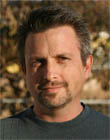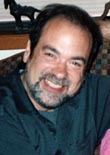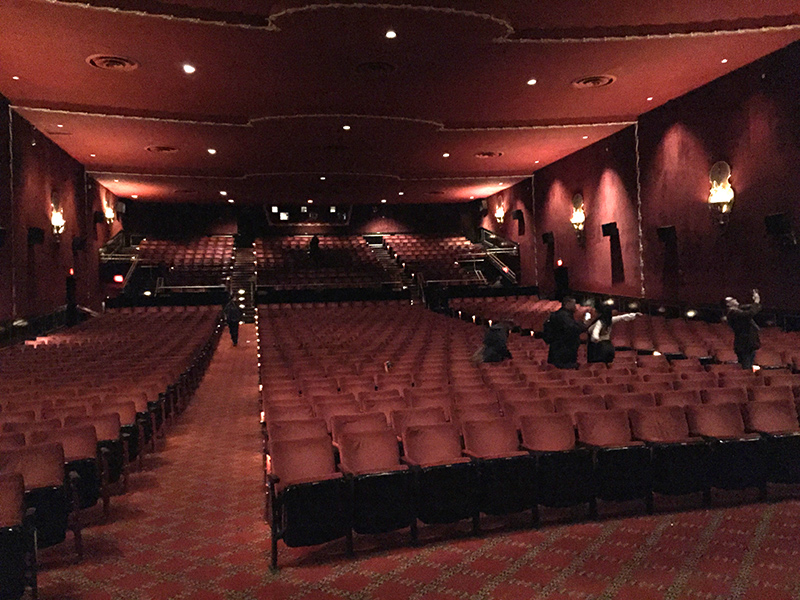|
|
This topic comprises 2 pages: 1 2
|
|
Author
|
Topic: 70MM Magnetic Surround Channels
|
|
|
|
|
|
|
Steve Guttag
We forgot the crackers Gromit!!!

Posts: 12814
From: Annapolis, MD
Registered: Dec 1999
|
 posted 03-11-2017 12:30 PM
posted 03-11-2017 12:30 PM




Here's the scoop. Most people with home theatres like the surround louder than intended. I deal with it all of the time. Additionally, in the 80s, it is quite possible that the theatre you went to may have turn the surrounds up a bit (happened all of the time). I've ever hear the line "I paid for them, I want to hear them).
For most of the 80s and prior, surrounds were just mono. They may have seemed louder since ALL were playing if any of them were. In fact, the legacy of the mono surround channel plagues the professional CINEMA market to this day, despite DCPs as being defined as a 5.1 soundtrack, minimum.
When stereo surrounds came out in the late 70s, they had to deal with cinemas (and movies) that had a mix of mono and stereo surrounds. So those cinema processors with stereo surrounds had their surrounds turned down 3dB per side. To which you think "Aha! I knew they turned them down in modern times!" Wrong, when Ls/Rs are playing together (e.g. mono surround material), they acoustically sum together to bring the level back up the 3dB that was removed. So, if you had a mono surround source and played it in a 5.1 theatre or 4.1 theatre, the surround level as measured is identical. When Surround EX came out in 99 (blech), same problem. The surround level had to remain the same regardless of auditorium it played in so if you played the same movie in a 4.1, 5.1 or 6.1 theatre, the measured surround level remains the same. Now, inferior EX decoders (which is an odd statement since EX was an inferior format, in my opinion) would get the levels wrong and emphasize the rear surrounds instead of have them be uniform with the rest of the array. Remember, in that same room, regardless if optical (mono surrounds), digital (stereo surrounds), or EX (sort of 3-channel surrounds), the levels should not go up/down based on what mode you had the processor in.
Now with 7.1, we cut the channel into quarters but the same rules apply Ls/BSl should play at the same level as just Ls in a 5.1 theatre. Thus, if you had all four 7.1 surround channels playing the same content as a mono surround theatre, the surround level should be identical.
What I find absurd is with DCPs, we had the opportunity to make a clean break from the mono-surround legacy. Furthermore, we had the opportunity to also get rid of the sound processor being responsible for level matching (which most techs don't seem to pay attention to). In my opinion, the people recording the movie should lay the track down without any compensation in the processor. Thus, while a 7.1 system would need to adjust its levels for a 5.1 movie, a 5.1 system playing a 5.1 movie (the new standard) should have played everything without any compensations. That is, in a typical processor where reference is 85dBc (at -20dBFS, "7", "0dB) it should have been that the surrounds were set to 85dBc like the stage channels. Instead, we had to bow to the legacy of pre-compensating of 82dBc/side so they would sum to 85dBc if played in unison. For the brief period where there was an overlap of film and digital, we have forever forced the industry to cater to a dead format (mono surrounds).
Again, I get the low-surround level complaint a fair bit but in truth, they are playing at the level the people that recorded it intended. I've done enough studio screenings to know.
Another factor, if you have crappy stage channels that are hard on the ears, you will tend to turn your fader down and with that, the surrounds. I've found that with better speakers/acoustics, the volume levels can play higher without discomfort and the surrounds have a much better presence.
Lastly, in the 80s, surrounds were typically not EQed or were minimally EQed so you may have had some extra bright sounding speakers that made themselves better known. I for one, subscribe to the belief that surrounds should not have the same ISO2969 rolloff due to their proximity to the listener and roll them much less, which does tend to give them more presence.
Remember too, in the 80s, you had the effects of a wide range of decoding equipment affecting your interpretation of the soundtrack. With DCPs, you are listening to PCM tracks with minimal processing. It should be, in most every respect, be a more faithful version of the original track.
| IP: Logged
|
|
|
|
|
|
|
|
|
|
|
|
Steve Guttag
We forgot the crackers Gromit!!!

Posts: 12814
From: Annapolis, MD
Registered: Dec 1999
|
 posted 03-12-2017 09:52 AM
posted 03-12-2017 09:52 AM




I find you analysis, Bobby, wrong. The surrounds have always followed the slope of the floor so regardless of slope floor or stadium riser; the distance between the surround speaker and listener is about the same. The size of the auditoriums has also always been a variable with the palaces of yesteryear being VERY wide but the early multiplexes being rather narrow. To this day, you still get a mix of situations.
While yes, as the risers approach the rear, it is possible for the rear surrounds to get VERY close to the listener, that would be a bad theatre design. Remember, speakers have a radiation pattern and they are "aimed" to cover the listening area, without regard to the room size. Surrounds tend to be primarily direct response devices and the use of many of them makes them diffuse. This is contrary to stage speakers where you want a direct response (1st arrival to be predominate) but often have to contend with the acoustics of the auditorium and strike the right balance of reverberation and 1st arrival to maintain intelligibility.
A typical stage horn has a 40-degree vertical coverage angle. In a slope floor theatre, you are going to point this further down to put that coverage on the seating area, however older theatres tend to be deeper, which raises the horn a bit. In a stadium theatre, the theatre is typically more shallow but more tall so you will have that horn pointing higher up to again, keep its coverage over the seating area. Now, ideally, in yesteryear we would have used variable intensity horns like the old Altec VIR but I don't know of anyone that did. We do use an outgrowth of that horn in some surround applications (under balcony and balcony side surrounds, the EVI-28).
| IP: Logged
|
|
|
|
|
|
|
|
|
|
|
|
|
|
All times are Central (GMT -6:00)
|
This topic comprises 2 pages: 1 2
|
Powered by Infopop Corporation
UBB.classicTM
6.3.1.2
The Film-Tech Forums are designed for various members related to the cinema industry to express their opinions, viewpoints and testimonials on various products, services and events based upon speculation, personal knowledge and factual information through use, therefore all views represented here allow no liability upon the publishers of this web site and the owners of said views assume no liability for any ill will resulting from these postings. The posts made here are for educational as well as entertainment purposes and as such anyone viewing this portion of the website must accept these views as statements of the author of that opinion
and agrees to release the authors from any and all liability.
|

 Home
Home
 Products
Products
 Store
Store
 Forum
Forum
 Warehouse
Warehouse
 Contact Us
Contact Us




 Printer-friendly view of this topic
Printer-friendly view of this topic














